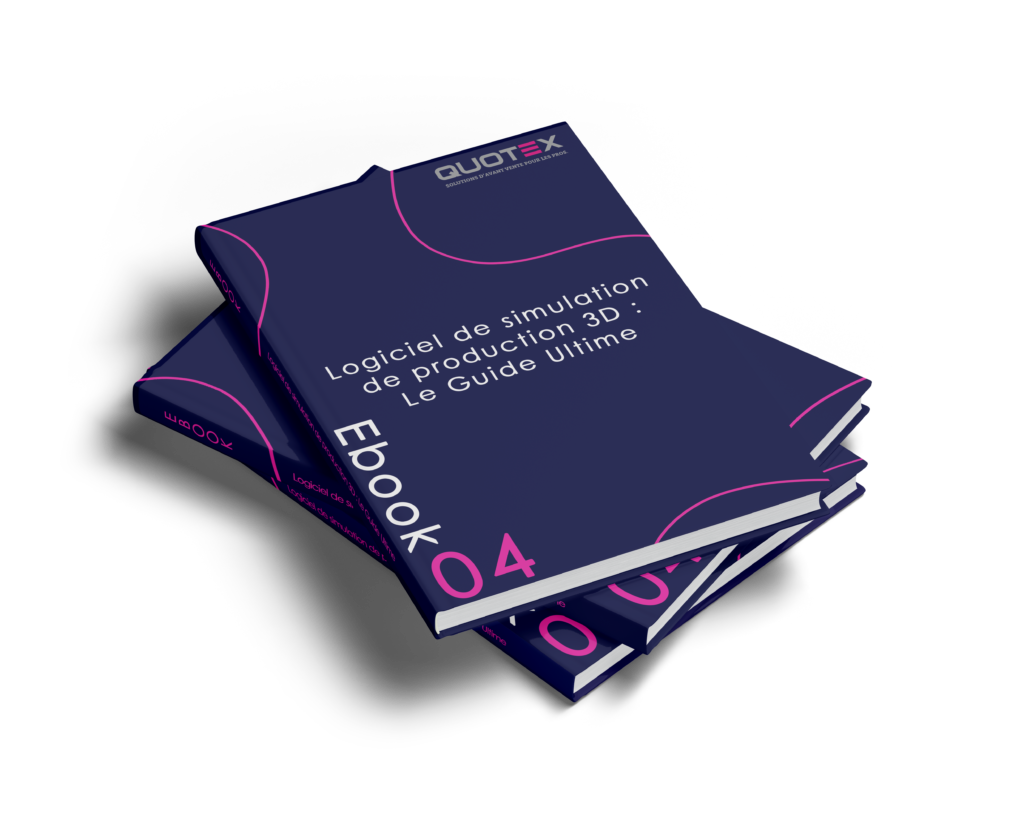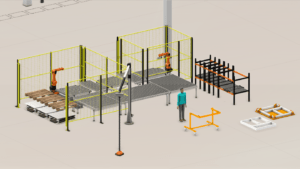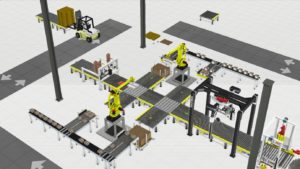Product design and production are closely linked. To avoid errors that can have a dramatic impact on margins, it is essential to integrate production issues into the design, which can be facilitated by simulation software.
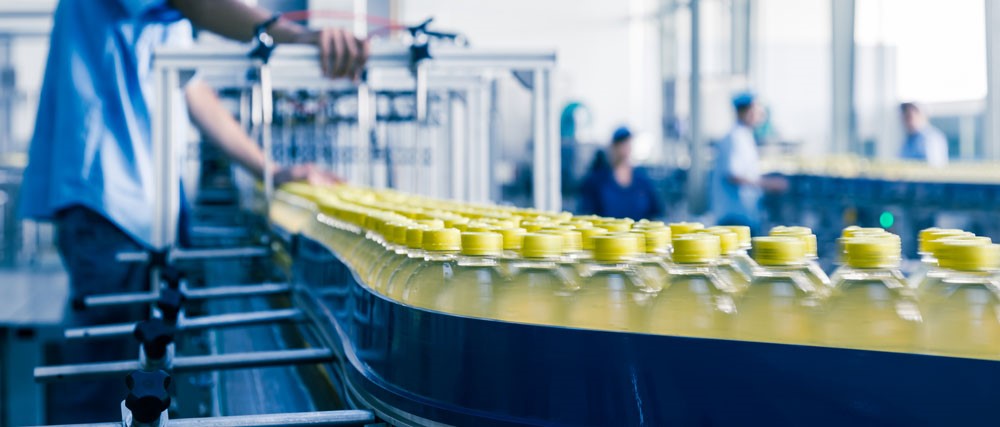
“It's not always possible to get the product team to visit the production floor, which is why 3D production simulation software is a great tool for product and production teams to collaborate and plan. »
We all make mistakes. It's part of the experience of being human. But it can be painful to see avoidable mistakes happen, like the production engineer who walks into his production area one morning to find a worker carrying boxes up and down a stationary conveyor belt, boxes of stock piling up in a catwalk and quality technicians dismantling parts by the hundreds. For product design and production teams, avoidable errors can be minimized through better coordination and communication during the planning phase .
The view from the production workshop: not obvious for marketing
Visiting a factory helps most product teams understand how their designs translate into production and the enormous amount of work and resources required to make their product.
It also helps them understand the pressures production teams face and the operational realities of a factory.
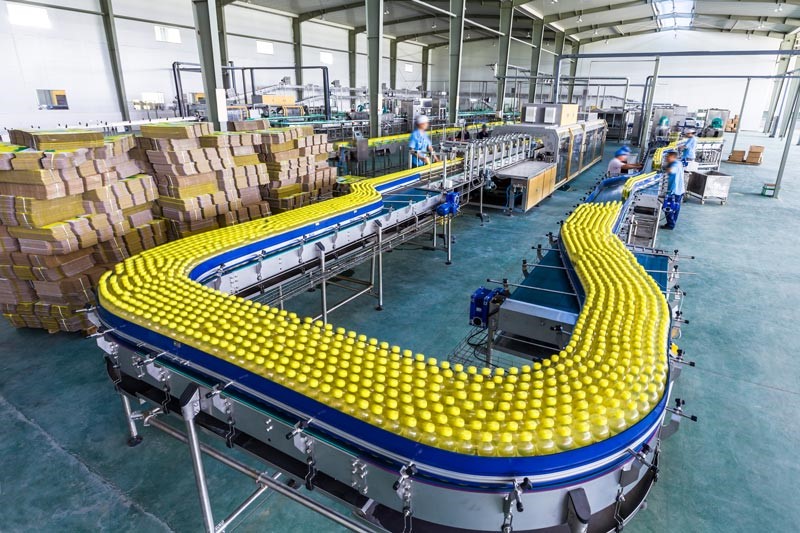
A plant manager's job can range from resolving emergency situations to finding ways to improve throughput, reduce costs and seek a performance improvement of 2% of daily capacity.
Some of the questions plant managers ask themselves daily include:
- Are we spending too much time sorting finished products?
- Why is boxing and packaging 35% of our process?
- Why is our total capacity only 90% of what we planned?
Most production facilities manufacture many types of products and have multiple production runs going on, with a constant cycle of starting new lines and ending old lines. Producing a new product with a new design is not a trivial task for production teams .
In addition to ensuring that they can produce the new product according to quality, cost and volume requirements, they must ensure that they can meet their commitments for other production. This becomes quite a difficult task.
The impact of product design on production
To illustrate this, let's look at the effect that a complex new packaging design can have on the manufacturing process .
For many consumer packaged products, the packaging is almost as important as the product itself . Packaging plays an essential role in branding, differentiation and movement of products on the shelf.
Packaging designers and marketers expect a lot from their packaging and put a lot of thought and effort into developing innovative packaging concepts with unique packaging die lines, printed graphics and unboxing experiences .
These complex designs also require a lot of effort from the production team to implement.
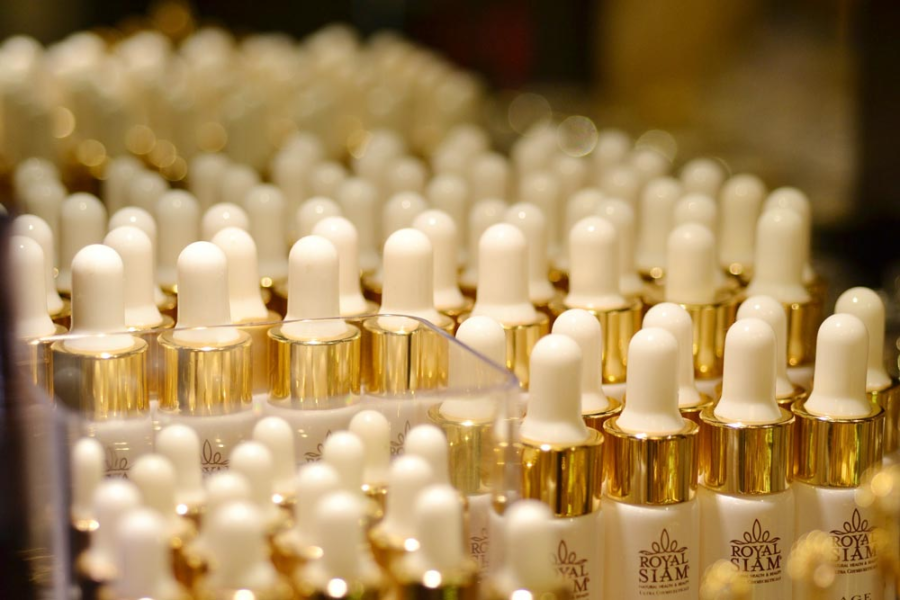
- On the production floor, this may mean a custom vacuum gripper , a capital expense to open the can. This may also require additional stations to manually load items to ensure a seamless unboxing experience.
- A limited supplier base for printed design means boxes are delivered on pallets , forcing changes to intake procedures and requiring additional floor space for storage .
- What if that same printed design included a custom coating? This processing is prone to scratches on the final conveyor belt , which means either turning it off or risking increasing scrap by 10% and reducing capacity .
If not properly planned, a package designed to increase sales by 2-3% can have a disproportionately negative effect on production: increased investment costs, constraints on factory layout and more stress for factory managers and production teams .
This doesn't make the design bad, but perhaps ineffective in achieving the overall goal.
Better planning for better financial results
This is an example of an actual list of issues identified during a factory visit by a design team. They all have fixes that vary in cost and complexity.
However, when making changes to a running production line, your options are typically limited , as are the impact of most fixes on total production.
That's why it's important for product designers and marketers to work closely with the production team during the design and planning phases – so they understand how product design will affect decisions and production operations.
For product design and production teams, avoidable errors can be minimized through better coordination and communication during the planning phase.

For the design of the packaging, the factory will ultimately create the design entrusted to it.
However, as was the case in this example, if the design team knew during the planning phase that their design would account for 30% of their production labor costs, they may have reconsidered the packaging , perhaps using a more standard design and instead focusing on copy and graphics to reduce production costs.
A buyer might take one look at the storage of incoming goods and know that their next RFP should include different shipping configurations. Instead of choosing a supplier based on a partial cost difference of a penny, the ability to integrate into the production process becomes more critical for new offerings.
A quick description and 2D drawing attached to a purchase order defining packaging and shipping constraints can reduce the required floor space by 1 m².
As for scratches on the outside of the packaging, that's a problem when moving things around. In this case, choosing a belt with a less abrasive surface or ensuring that the belt has not made a 90 degree turn are both options. This may require a little more investment, but could result in a significant reduction in discharges.
Of course, with a running production line and the pressure to make daily quotas, your best option may be to track what you did this morning. Have a worker pick up the boxes and walk them to the other end of the conveyor belt.
Improve your planning with simulation software
It's not always possible to get the product team to visit the production floor, which is why 3D production simulation software is a great tool for the product and production teams to collaborate and plan.
Visual Components 3D production simulation software is specifically designed for manufacturing professionals to design, simulate and communicate production designs and processes .
It makes it easier for production teams to communicate production plans and helps product teams visualize the impact of their designs on production decisions.
You too can improve consistency between design and production!
Contact us to benefit from a personalized, no-obligation demonstration of Visual Components.
